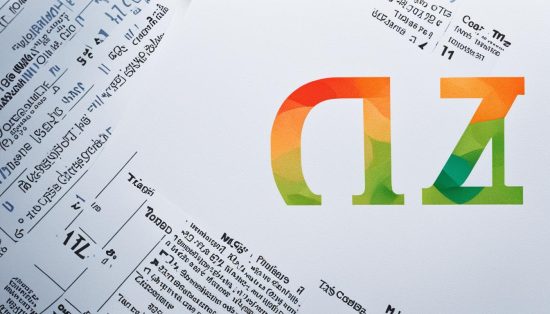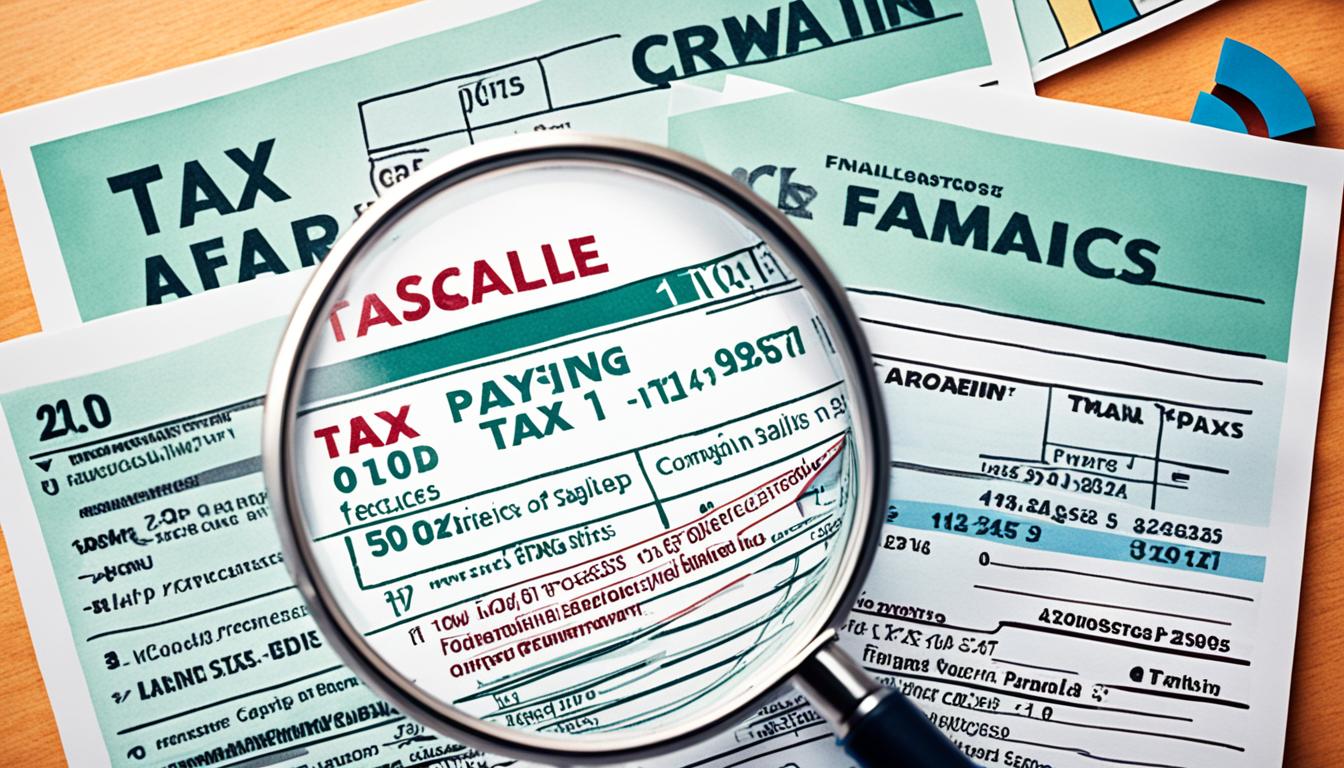Last Updated on: 25th April 2024, 06:06 am
The tax code 1257L M1 plays a significant role in the UK income tax system. As an employee, understanding this tax code is essential for managing your personal allowance and ensuring accurate deductions under the PAYE system. Let’s dive deeper into the meaning and implications of this tax code.
Understanding UK Tax Codes
Tax codes in the UK play a crucial role in determining the amount of tax that should be deducted from an employee’s pay. These codes, consisting of numbers and letters, represent various factors such as personal allowances, deductions, and tax rates. Understanding the meaning of tax codes is essential for both employers and employees to ensure accurate tax deductions and comply with UK tax regulations.
UK tax codes are alphanumeric combinations that provide valuable information about an individual’s tax obligations. These codes are used by employers to calculate the correct amount of tax to deduct from an employee’s wages or salary. They are based on factors such as the individual’s personal allowance, tax-free earnings, and any tax deductions or adjustments that may apply.
UK tax codes serve as a communication tool between HM Revenue and Customs (HMRC), employers, and employees. By deciphering these codes, employers can make accurate payroll calculations, while employees can have a clearer understanding of their tax obligations and deductions.
The format and structure of UK tax codes can vary, with the most common format being a combination of numbers and letters. The numbers typically represent the individual’s tax-free allowance for the tax year, while the letters indicate specific circumstances or adjustments that affect the individual’s tax position.
Here is an example to illustrate the structure of a UK tax code:
| Tax Code | Meaning |
|---|---|
| 1257L | An individual’s tax-free allowance for the tax year 2024 to 2025 |
Understanding the numbers and letters in a tax code is key to comprehending the tax implications it carries. By breaking down the code, individuals can gain insights into their personal allowances, tax-free earnings, and overall tax position.
It’s important to note that tax deductions play a significant role in UK tax codes. Deductions are allowances or adjustments that reduce an individual’s taxable income, ultimately lowering the amount of tax they owe. Common deductions include contributions to pension schemes, charitable donations, and certain work-related expenses.
By familiarizing themselves with the meaning of tax codes and the deductions they may be entitled to, individuals can ensure they are paying the correct amount of tax and taking advantage of all available tax benefits.
What is the Tax Code 1257L M1?
The tax code 1257L M1 is a commonly used tax code in the United Kingdom. This code indicates that an individual has one job and does not have any untaxed income, unpaid tax, or taxable benefits. The “M1” suffix denotes that this is an emergency tax code, which is applicable when a new employee does not possess a P45 form from their previous job.
Emergency tax codes, like the 1257L M1, are implemented as a temporary measure to calculate tax deductions under exceptional circumstances. It serves as a solution when employees lack important documentation or when there are delays in receiving income details from HMRC. The emergency tax code allows for the deduction of temporary taxes until the correct tax code is provided.
Decoding the Numbers in Tax Code 1257L
The tax code 1257L consists of both numbers and letters, each representing specific information about an employee’s tax situation. In this section, we will focus on decoding the numbers in tax code 1257L and understanding their significance.
The numbers in tax code 1257L represent the amount of tax-free earnings an employee is entitled to within a particular pay period. In the case of 1257L, the tax-free amount is £12,570 for the tax year 2024 to 2025. This means that employees can earn up to £12,570 without having to pay any tax on those earnings.
This tax-free allowance is an important part of the UK income tax system. It provides individuals with the flexibility to earn a certain amount before their income becomes subject to taxation. By utilizing this tax-free allowance, employees can maximize their earnings and reduce their overall tax liability.
The tax-free earnings represented by the numbers in tax code 1257L apply to various components of an individual’s income, including their salary, wages, and certain benefits. It is important for employees to understand this allowance and ensure that their tax code accurately reflects their income and entitlements.
By decoding the numbers in tax code 1257L, individuals can gain a better understanding of their tax-free earnings and make informed financial decisions. It is always advisable to consult with a tax professional or refer to the official UK tax guidelines to ensure compliance with the tax code and maximize tax benefits.

Tax-Free Earnings: At a Glance
To provide a clear understanding of the tax-free earnings represented by the numbers in tax code 1257L, let’s summarize the information in a table:
| Tax Code | Tax-Free Earnings | Tax Year |
|---|---|---|
| 1257L | £12,570 | 2024-2025 |
As shown in the table, tax code 1257L entitles employees to tax-free earnings of £12,570 for the tax year 2024 to 2025. This allowance provides individuals with the opportunity to earn a significant amount of income without incurring any tax liability.
Understanding the numbers in tax code 1257L is essential for individuals who want to make the most of their tax-free earnings and ensure accurate tax calculations. By familiarizing themselves with their tax code and consulting with professionals when needed, individuals can navigate the UK tax system with confidence.
Explaining the Letter ‘L’ in Tax Code 1257L
When looking at the tax code 1257L, the letter ‘L’ represents the individual’s personal allowance. But what exactly does that mean? The personal allowance refers to the amount of income an individual can earn before they start paying income tax. For the tax year 2024 to 2025, the personal allowance for tax code 1257L is £12,570.
Essentially, this means that individuals with tax code 1257L can earn up to £12,570 without having to pay any income tax. It’s important to note that once their income surpasses this threshold, income tax will be deducted at the appropriate tax rates. Understanding the personal allowance can help individuals plan their finances and ensure they’re aware of their tax obligations.
To put it into perspective, let’s take an example. Imagine someone with tax code 1257L earns £15,000 in a tax year. In this case, only the amount exceeding the personal allowance (£15,000 – £12,570 = £2,430) would be subject to income tax. The tax rates applicable to this amount would determine the final amount of tax deducted.
Being aware of the personal allowance can help individuals calculate their tax liabilities accurately and plan their finances accordingly. It’s important to stay informed about any changes in the personal allowance each tax year, as these may have an impact on your overall tax situation.
The Role of ‘M1’ in Tax Code 1257L M1
The tax code 1257L M1 contains the suffix ‘M1,’ which indicates an emergency tax code. This particular type of tax code is assigned to new employees who do not possess a P45 form from their previous job or when there are delays in receiving income details from HMRC.
When a new employee starts a job without a P45 form, their employer assigns them an emergency tax code with the suffix ‘M1’ to facilitate temporary tax deductions. This ensures that the employee’s income tax is still deducted, even in the absence of the complete tax information.
The ‘M1’ emergency tax code allows employers to deduct taxes based on a set rate until the correct tax code is provided. It acts as a temporary solution, enabling both employers and employees to fulfill their tax obligations without significant delays.
Once the correct tax code is provided, the employer can update it in their payroll system, allowing for accurate tax deductions in subsequent pay periods.
It is important for new employees to understand the implications of being on an emergency tax code and take steps to regularize their tax affairs by providing the necessary information to their employer and HMRC.
| M1 Emergency Tax Code | Applicable Situations |
|---|---|
| New employee without a P45 | When a new employee does not have a P45 form from their previous job, the ‘M1’ tax code is assigned as an interim measure until the correct code is provided. |
| Delays in receiving income details | In certain situations, such as changes in employment or the receipt of benefits, there may be delays in receiving income details from HMRC. In such cases, the ‘M1’ emergency tax code allows for temporary deductions until the correct code is obtained. |
Note: It is essential for employees to regularize their tax codes by providing the necessary information to their employer and HMRC to ensure accurate tax deductions.

Who is Eligible for Tax Code 1257L M1?
Tax code 1257L M1 is typically assigned to individuals who have one job and no untaxed income, unpaid tax, or taxable benefits. It is a standard tax code used for individuals with a straightforward employment situation.
If you have only one job and don’t receive any income that isn’t subject to tax, such as rental income or dividends, you may be eligible for tax code 1257L M1. Additionally, you should not have any outstanding unpaid tax or taxable benefits.
This tax code is designed for individuals with a simple tax profile, ensuring that the correct amount of tax is deducted from their earnings.
However, it’s important to note that individuals with multiple jobs, self-employment income, or other complex tax circumstances may have different tax codes. In such cases, it is advisable to consult a tax professional or contact HM Revenue and Customs (HMRC) for guidance.
Eligibility criteria for tax code 1257L M1
- Having only one job
- No untaxed income
- No unpaid tax
Example of eligibility
| Situation | Eligible for 1257L M1? |
|---|---|
| Individual with one job and no untaxed income | Yes |
| Individual with multiple jobs and untaxed income | No |
| Individual with unpaid tax or taxable benefits | No |
When Does Tax Code 1257L M1 Apply?
Tax code 1257L M1 applies in two main situations. Firstly, it is used for new employees who do not have a P45 form from their previous job. This commonly occurs when individuals start a new job and have not yet received their P45 form, which provides important information about their previous income and tax contributions.
Secondly, tax code 1257L M1 is also used as an emergency tax code when HMRC (HM Revenue and Customs) does not have the necessary income details in time. This can happen in cases of changes in employment or receipt of benefits, where there may be a delay in providing the required documentation or information to determine the accurate tax code.
In both situations, tax code 1257L M1 is used temporarily until the correct tax code is provided or the necessary information is received by HMRC. This ensures that the correct amount of tax is deducted from the employee’s earnings in accordance with their income and tax status.

Examples of When Tax Code 1257L M1 May Apply:
- A new employee joins a company and does not have a P45 form from their previous employment. In this case, the employer assigns tax code 1257L M1 until the employee provides the necessary documentation.
- An individual experiences a change in employment, such as starting a new job or transitioning between employers, and HMRC does not receive the updated income details in time. As a result, HMRC assigns tax code 1257L M1 temporarily until the accurate tax code is determined.
- Someone starts receiving taxable benefits, but the information regarding these benefits is not provided to HMRC promptly. In this case, HMRC may use tax code 1257L M1 until the correct tax code can be assigned based on the individual’s income and benefit status.
It is important for employers and employees to be aware of the situations in which tax code 1257L M1 may be applied. By understanding the circumstances and ensuring the timely submission of relevant information, individuals can prevent unnecessary emergency tax deductions and ensure accurate tax calculations.
In the next section, we will explore the impacts of being on tax code 1257L M1 and how it affects an employee’s income. Additionally, we will discuss the steps necessary to regularize your tax code and avoid emergency tax situations.
| Situation | Application of Tax Code 1257L M1 |
|---|---|
| New Employee without P45 | Temporary tax code until P45 is provided |
| Delayed Income Details | Temporary tax code until accurate information is received by HMRC |
Impacts of Being on Tax Code 1257L M1
Being on tax code 1257L M1 can have significant impacts on an employee’s income. As an emergency tax code, it means that a proportion of the tax-free allowances for the tax year is allocated against each pay period. This can result in higher tax deductions until the correct tax code is provided.
When an employee is on tax code 1257L M1, their tax calculations are based on emergency deductions rather than their actual entitlements. This can lead to an overpayment of tax, as the emergency tax code assumes a higher taxable income than what the employee may actually earn.
For example, if an employee is entitled to a tax-free allowance of £12,570 for the tax year, the emergency deductions based on tax code 1257L M1 may result in the employee being taxed on a higher portion of their income. This can lead to a reduction in take-home pay.
The Importance of Regularizing Your Tax Code
Regularizing your tax code is crucial to ensure accurate deductions and avoid unnecessary overpayments. To regularize your tax code, you should provide the necessary information and documentation to HMRC, such as a P45 form or details of any untaxed income.
By updating your tax code to the correct one, you can ensure that your tax deductions align with your actual entitlements and taxable income. Regularizing your tax code helps to avoid emergency tax situations and ensures that you are only paying the correct amount of tax based on your specific circumstances.
Regularizing your tax code not only ensures accurate tax calculations but also prevents unnecessary financial strain due to higher tax deductions. It is important to keep HMRC informed of any changes in your employment or personal circumstances to maintain an up-to-date and accurate tax code.
In addition, regularizing your tax code allows you to take advantage of any available tax reliefs, allowances, and deductions that you may be eligible for. This can help optimize your overall tax position and maximize your take-home pay.
Being on tax code 1257L M1 can result in higher tax deductions due to emergency calculations. Regularizing your tax code is essential to ensure accurate deductions and avoid unnecessary overpayments. By providing the necessary information to HMRC and updating your tax code, you can ensure that your tax calculations align with your actual circumstances, optimize your tax position, and maintain financial stability.
How Emergency Tax Codes Affect Your Income?
Emergency tax codes, such as M1, can have an impact on your income tax calculations. These codes are used temporarily in situations where there is a lack of information or documentation, such as a missing P45 form. When you’re on an emergency tax code, it can result in higher tax deductions on a temporary basis until the correct tax code is provided. It’s important to regularize your tax code to avoid unnecessary over- or underpayments of tax.
In the case of an emergency tax code like M1, you may experience temporary deductions that differ from your regular tax calculations. This is because the emergency tax code is a temporary measure that allows the HMRC to collect the appropriate amount of tax until your correct tax code is established. The temporary deductions made under the emergency tax code will be adjusted once the correct tax code is provided.
To better understand how emergency tax codes affect your income, consider the following scenario:
| Regular Tax Code | Emergency Tax Code (M1) |
|---|---|
| Standard Tax Deduction | Higher Tax Deduction |
| Accurate Tax Calculation | Temporary Tax Deduction |
| Based on Complete Information | Based on Limited Information |
| Adjusted for Personal Allowance | No Personal Allowance Considered |
As you can see from the table, emergency tax codes result in higher tax deductions and are based on limited information provided by you or your employer to the HMRC. These codes are designed to ensure that some tax is deducted until your correct tax code is established.
Regularizing your tax code is essential to ensure accurate tax deductions. To do so, you should promptly provide the HMRC with any missing information or correct any errors in your tax records. This includes providing the necessary documentation, such as a valid P45 form, if applicable. Regularizing your tax code will help avoid unnecessary over- or underpayments of tax, providing you with greater financial stability.

Regularizing Your Tax Code
To regularize your tax code, you need to update your information and notify HMRC of any changes in your employment or personal circumstances. Providing the necessary documentation, such as a P45 form or details of untaxed income, will help HMRC to assign the correct tax code. Regularizing your tax code is vital to ensure accurate tax deductions and avoid potential under- or overpayments.
When your employment or personal circumstances change, it is crucial to inform HMRC promptly. Updating your information with HMRC will allow them to adjust your tax code accordingly, preventing any inaccuracies in tax deductions. Consider the following steps to regularize your tax code:
- Notify HMRC of any changes: If you change jobs, start a new business, or experience other significant changes in your income or employment, inform HMRC as soon as possible.
- Provide necessary documentation: Submit relevant documents such as your P45 form from previous employment or details of untaxed income to HMRC. This helps them assess your tax situation accurately.
- Keep HMRC updated: Throughout the tax year, stay in touch with HMRC and promptly notify them of any further changes that may affect your tax code.
By regularly updating your information and notifying HMRC of changes, you ensure that your tax code reflects your current circumstances. This allows HMRC to calculate your tax deductions correctly, minimizing the risk of underpayment or overpayment. Regularizing your tax code provides peace of mind and helps you maintain compliance with the UK tax system.
| Steps to Regularize Your Tax Code | Benefits |
|---|---|
| 1. Notify HMRC of any changes | – Accurate tax deductions – Avoidance of under- or overpayments |
| 2. Provide necessary documentation | – Assessment of tax situation – Correct assignment of tax code |
| 3. Keep HMRC updated | – Updated tax code reflecting current circumstances – Mitigation of potential errors |
Conclusion
Understanding the tax code 1257L M1 is essential for individuals navigating the UK tax system. This tax code applies to individuals who have one job and no untaxed income or taxable benefits. By comprehending the numbers and letters in tax codes, individuals can ensure precise tax deductions, effectively manage their personal allowance, and navigate the UK tax system seamlessly. It is crucial to regularize your tax code by keeping HMRC informed of any changes, enabling you to avoid emergency tax situations and ensure accurate tax calculations.
By familiarizing yourself with the tax code 1257L M1, you can optimize tax deductions, maximize your personal allowance, and navigate the complexities of the UK tax system. Regular updates to your tax code and open communication with HMRC will help you avoid unnecessary tax complications and maintain accurate tax calculations throughout the year.
Understanding the implications of tax code 1257L M1 empowers individuals to confidently manage their taxes and make informed financial decisions. By staying informed and proactively managing your tax affairs, you can navigate the UK tax system, optimize your personal allowance, and ensure accurate tax deductions.




















No Comments
Leave a comment Cancel